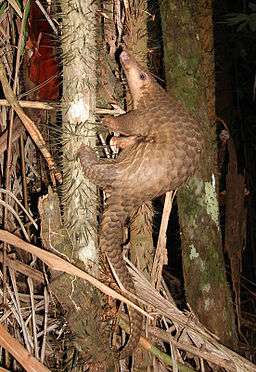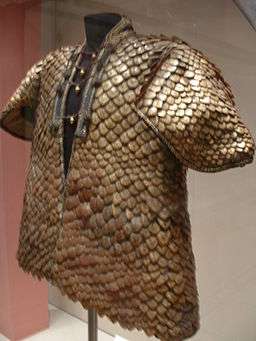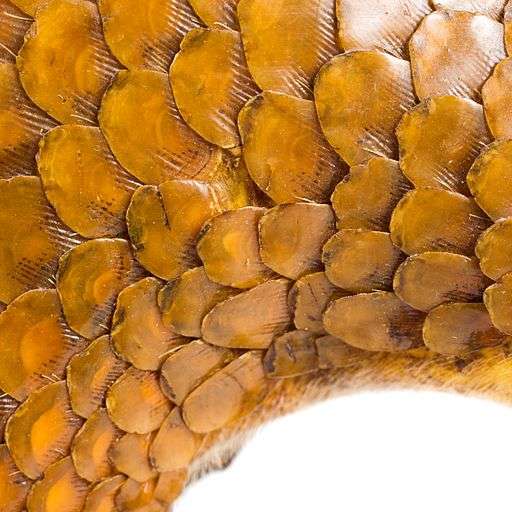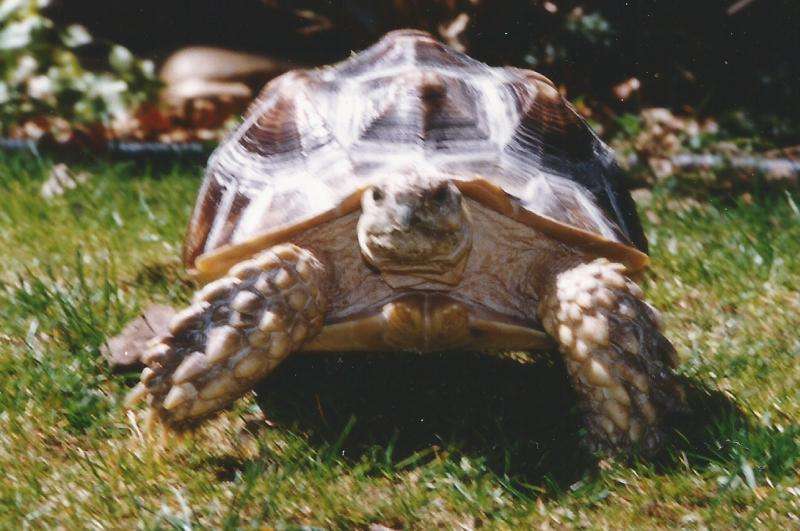How the pangolin got its scales – a genetic just-so story

Everyone loves animal oddities. Darwin and Lamarck pondered the advantages of the giraffe's long legs and neck, while a few decades later Rudyard Kipling explained how the leopard got its spots. Today genome sequencing is fleshing out what we thought we knew about some distinctive animal adaptations, from the giraffe to the leopard.
Adaptations are inherited traits that increase the likelihood of an individual surviving to reproduce. A zebra's stripes rendering it invisible when it runs and the fennec fox's giant ears that dissipate heat and hear distant predators are adaptations.
A report in this month's Genome Research provides the basis for a "just-so story" about how the pangolin – aka the scaly anteater—got its scales. They protect, but in a way beyond the obvious. According to the genome, the armor of the pangolin replaced part of its immune response.
Endangered!
The eight modern species of pangolins began to diverge from their shared ancestor about 60 million years ago, which diverged from insectivores that preceded the placental mammals about 100 million years ago, when hairy animals were just beginning to replace the reigning reptilian giants.

Four of the modern species of pangolins live in Asia and four in Africa. The International Union for Conservation of Nature and Natural Resources (IUCN) Red List of Threatened Species considers them "critically endangered" and they also make the Evolutionarily Distinct and Globally Endangered (EDGE) mammals and amphibians list.
Pangolins are the the most trafficked and poached mammal. They are a delicacy in Vietnamese and Chinese cuisine, and their ground-up scales are used in Chinese medicine to treat cancer, various skin conditions, and poor circulation. In African folklore, a captured pangolin was brought to the chief, observed for a time, then sacrificed and served as relish for the meal of the chief and his senior wife.
Agriculture and deforestation have steadily shrunk the pangolins' habitats, and the animals are extremely difficult to maintain in captivity.
Meet the pangolin
The pangolin's trademark armor is actually a coating of hairs (keratin) glommed together into large, overlapping scales that cover all but the soft belly. "Pangolin" is from the Malay word 'pengguling,' for rolling up, which is what they do when they feel threatened, protecting their soft middles and the organs within.
The animal is toothless and nearly jawless, it's pointy snout and strong tongue ideal for hoovering up meals of ants and termites. Pangolins live in trees and underground. Seven of the eight species are fairly small, like a cat, but the giant pangolin Manis gigantean approaches 6 feet in length. It resides in burrows left by regular anteaters, which are only very distant relatives.

Pangolin vision is very poor, yet the sense of smell acute.
Pseudogenes and contracting gene families
Because the pangolin was the only placental mammal who hadn't had its genome sequenced, Siew Woh Choo, from the University of Malaysia and colleagues did so, for two females. One is a Malayan pangolin of species Manis javanica, which sounds like a Starbucks drink, and the other a Chinese pangolin, M. pentadactyla. The Malayan's genome is 23,446 genes and the Chinese one is 20,298—same ballpark as us.
Evolutionary geneticists probe genomes for signs of positive and negative natural selection. Genes that don't vary much in DNA sequence from individual to individual indicate positive selection, because whatever the sequence is, the encoded protein is working: an if-it-ain't-broke scenario. In contrast, a gene that's no longer functional can be riddled with mutations, varying greatly among individuals – if it's protein isn't useful or even produced, it doesn't much matter what the underlying DNA sequence is. (Note to The New York Times and other media outlets: avoid "to evolve". Change driven by mutation and natural selection is not a desire or choice. It just happens. Giraffes didn't yearn to reach the treetops and alter their DNA accordingly.)
Genes that have diverged in sequence so greatly from the ancestral one that they no longer function are called pseudogenes. They may arise from a gene duplication – having an extra copy allows one gene to go on functioning while the partner accumulates mutations. In this way genomes come to harbor pseudogenes, the ghosts and echoes of functional counterparts from the past. The best-studied pseudogenes are in the beta globin cluster in human genomes.
Several pangolin genes have been "pseudogenized" into "loss of function" – what isn't needed accumulates glitches. And in those deactivated genes lies a genetic just-so story:

- A gene called ENAM, which encodes the largest tooth enamel protein, is full of premature stop codons, duplications, and deletions. Ditto the genes for the enamel proteins ameloblastin and amelogenin. Other toothless creatures, including baleen whales, birds, and turtles, also have mutations in these genes.
- Several vision genes have been mutated into silence.
- The interferon epsilon gene is so altered that it doesn't work in both pangolin species, as well as in their African counterparts. Yet it is fully functional in 71 other species of placental mammals, where it provides a "first line of defense" against skin infections. Several other interferon genes, which deal with infection, inflammation, and skin healing, are missing too. The Malayan pangolin has three, the Chinese pangolin two, yet other mammals a full set of ten. Use it or lose it.
- Pangolin genomes have fewer heat shock genes, perhaps explaining their sensitivity to stress and their poor fate in zoos.
Expanding gene families
A look at gene families that have more members in pangolin genomes compared to those of other placental mammals provides the complementary positive view of evolution. These include genes that encode:
- proteins that build the cytoskeleton, form cell-to-cell junctions, and promote nervous system function and signal transduction – traits necessary for scale formation
- cathepsins and septins, which squelch bacterial infections
- odorant receptor genes that underlie the pangolin's superior sense of smell.
So the clues in the pangolin genomes – which gene families have contracted and which expanded—suggest strongly that the armor has replaced part of the immune response. The tightly-knit, tough scales deter not only predators, but keep the animal free of infection.
Although it is intriguing to imagine reasons why animals are as they are – from the giraffe's neck to the leopard's spots to the pangolin's armor – clues in DNA sequences can provide a broader and less biased view of adaptive traits, from those that have stood the test of evolutionary time to those relegated to the genomic junkyard.
More information: Siew Woh Choo et al. Pangolin genomes and the evolution of mammalian scales and immunity, Genome Research (2016). DOI: 10.1101/gr.203521.115
Journal information: Genome Research
Provided by PLOS Blogs
This story is republished courtesy of PLOS Blogs: blogs.plos.org.


















